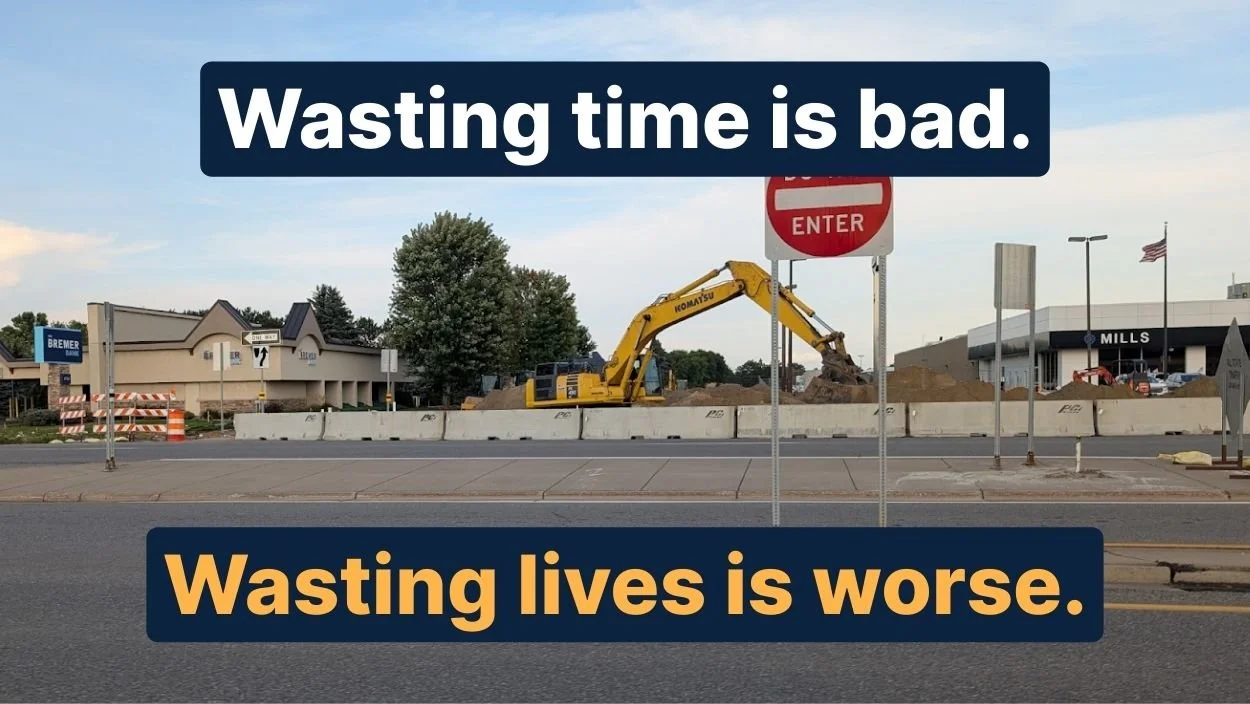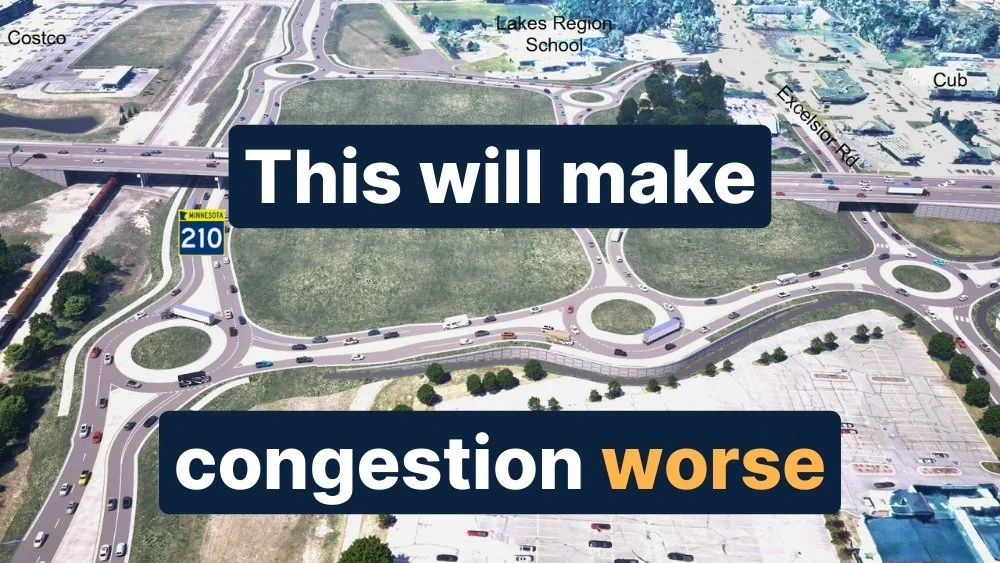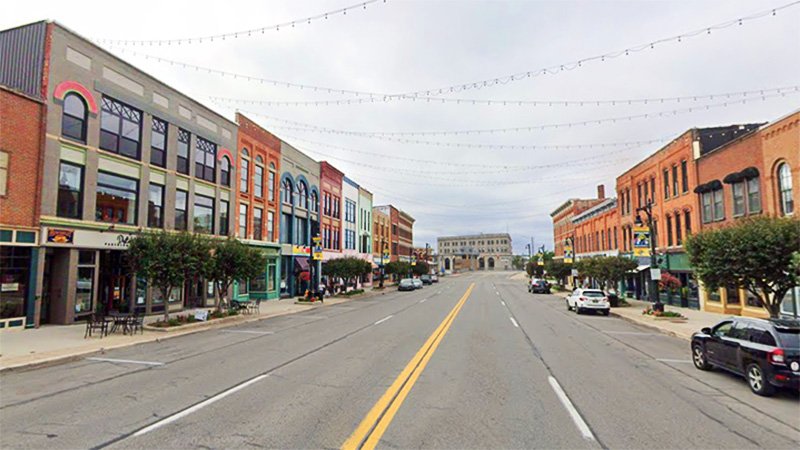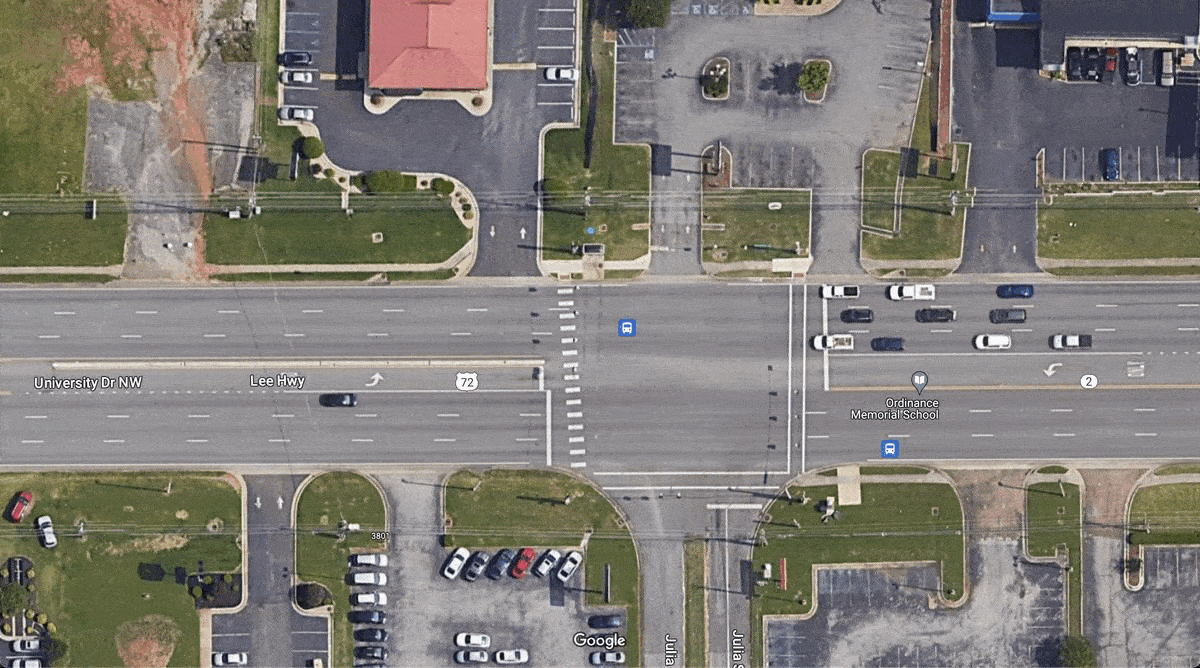We could save lives for far less than $58 million, but only if safety were the true priority.
Read MoreIn Baxter, “fighting congestion” is the sales pitch, but corporate subsidy is the goal.
Read MoreWhen our infrastructure makes normal childhood behavior life-threatening, allowing kids to do typical childhood activities becomes reckless endangerment.
Read MoreWhen a child is killed on a street like West Hudson Boulevard, it’s not a tragic fluke. It’s the outcome we designed for.
Read MoreThere is nothing radical or reckless about letting your child cross the street. So why are parents across the country facing criminal charges for doing just that?
Read MoreBack when I was a traffic operations professional, I believed I was saving lives by practicing my profession exactly as it was taught. But was I?
Read MoreAfter a cyclist was killed in a car crash, residents of Indianapolis worked with Strong Towns to conduct the first Crash Analysis Studio. City officials have taken notice and instituted new initiatives to create safer streets.
Read MoreStrong Towns ideas have started permeating the wider culture at an increasing rate. But even as many cities and organizations embrace the movement, others twist it to serve their own agendas. Now more than ever, the movement needs advocates who uphold the true principles of building strong towns. It needs you.
Read MoreThousands of elected officials and people who work in local government want to make their streets safer. Here’s how you can help them do that.
Read MoreThe design of a roadway should reflect its intended use: streets should be designed for safety and building community wealth, while roads should be designed for fast travel. Here’s an example of safe road design and how you could apply it to a stroad.
Read MoreIn recent years, Strong Towns ideas have started permeating the wider culture at an increasing rate. But even as many cities and organizations embrace the movement and create real, positive change, others twist it to serve their own agendas. Now more than ever, advocates must uphold the true principles that build strong towns.
Read MoreVison Zero is supposed to represent a commitment to achieving zero traffic deaths, but it often devolves into empty platitudes — even when public officials genuinely support it. That’s because they’re looking for solutions in the wrong place. Instead of blaming individual drivers, officials need to look at the root cause of most traffic deaths: the contradictory design of city streets.
Read MoreEconomic productivity, cost-effectiveness and safety: stroads fail at all three. Advocates in Port Huron, Michigan, are working to make their city recognize that, so they can turn the dangerous Huron Avenue into a thriving community center.
Read MoreWith an average of 39 collisions a day, Winnipeg, Canada, is a dangerous place for drivers and pedestrians alike. Residents have been fighting to change that for over 40 years, but progress is slow.
Read MoreThis timeline of tragedy shows the many, many times city officials in Springfield, MA, should have addressed the unsafe conditions of State Street.
Read MoreOne reason communities hesitate to acknowledge their dangerous stroads is because the problem is so big, addressing it would paralyze our existing planning bureaucracies. But there is still a way forward.
Read MoreWhy does a deadly stroad like this even exist in a city trying to achieve zero traffic deaths by 2030?
Read MoreDrivers on this stroad in Huntsville, AL, are set up to fail. And now, because of that, a person has lost his life.
Read MoreThis Alabama stroad features a sidewalk with ADA-compliant features, but no one could call this a safe place to exist outside of a vehicle.
Read MoreIncrementalism and humility are key to avoiding a gap between what we think we’re accomplishing with the designs of our built environment versus what people actually experience when navigating it.
Read More



















